Reasons: DEIC permanent settlement at the Cape 1652
The DEIC (Dutch East India Company) in the Netherlands was set up in 1602 to trade. In 1647, the Haerlem, a Dutch trading ship, was shipwrecked in Table Bay. When the sailors eventually got back to Holland they gave the DEIC or VOC (Vereenigde Oost Indische Compagnie) wonderful reports about what they had seen at the Cape – plenty of water, fertile land and lots of wild animals.
The VOC was the wealthiest and most powerful trading company in the world at that time. They traded for spices and other interesting goods from India. They had to sail for months to get from Europe to the East and months to sail back home.
On these voyages, many of the sailors died from a disease called scurvy. Scurvy is caused by a lack of vitamin C. The VOC decided it would be a good idea to set up a half-way station at the Cape so that fresh fruit and vegetables could be grown for the sailors.
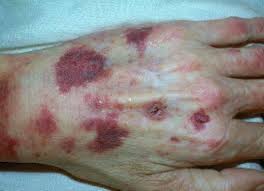 Scurvy Disease Image source
Scurvy Disease Image source
Activity 2
What causes scurvy? (1)
Name 3 good things that the sailors from the Haerlem said that they had found at the Cape. (3)
What does DEIC stand for? (1)
Total: 5
In April 1652, Jan van Riebeeck arrived at the Cape with 100 men and women, including his wife Maria de la Quellerie. The first thing the men did was to build a fort for protection. The original fort, built of mud, clay and timber, no longer exists, but a more permanent brick, stone and cement castle was built near to the fort some years later. The building, known as the Castle, still stands today.
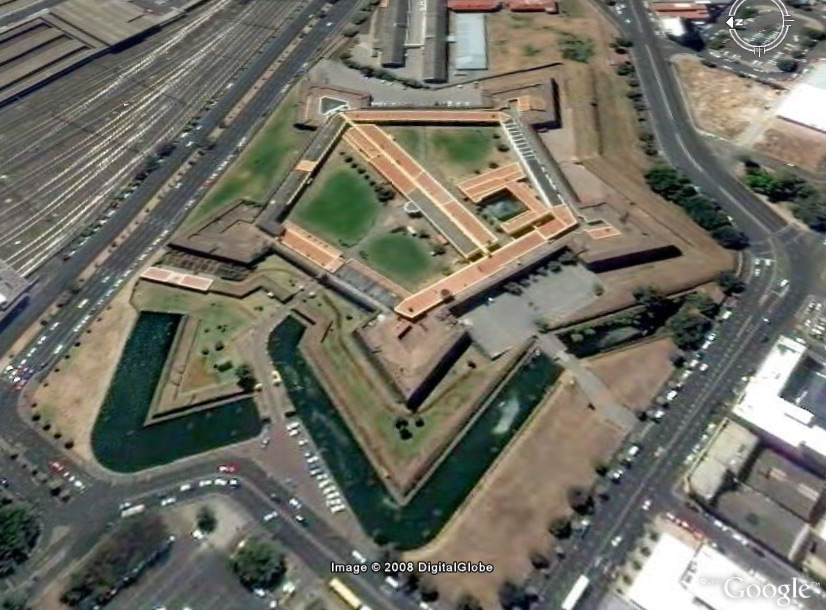 An aerial view of the Castle in Cape Town Image source
An aerial view of the Castle in Cape Town Image source
The Dutch also started a large garden to produce fresh fruit and vegetables for themselves and the ships stopping at the refreshment station. This was known as the Company gardens. It still exists today, but is no longer a vegetable garden. In time, the settlers built a harbour and workshops for ship repairs.
After some time, medical centres were built and doctors were brought over from Europe. Van Riebeeck’s men kept sheep and rabbits on Robben Island. They hunted seals, penguins and wild animals.
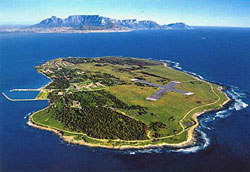 Robben Island in Cape Town Image source
Robben Island in Cape Town Image source
Robben Island lies 12 km away from Cape Town. It has been used in various ways over the last 400 years: it has served as a hospital for lepers as well as for insane and very ill patients. It was used for military purposes during the Second World War. From 1961 to 1991 it was used as a maximum security prison. The most famous prisoner during that time was Nelson Mandela. Today it is a famous World Heritage Site.
| Vocabulary | Definition |
|---|---|
| Blacksmiths | people who make horseshoes and other objects from metal |
| Indigenous | belonging naturally |
The VOC realised that the company could not produce enough food for the passing ships so they allowed some of their people to set up their own farms. These people were called ‘Boers’, the Dutch word for ‘farmer’. The VOC wanted more settlers to leave Holland and settle at the Cape. By the early 1700s, there were about 1000 Dutch settlers living in the Cape. The settlers built houses, shops, taverns and offices and a new town grew. People became carpenters, bricklayers, inn keepers, bankers, officials and blacksmiths. There were also farmers outside the town. They produced food for the growing settlement. As the settlement grew, the settlers needed more and more land for farming. This situation led to conflict with the indigenous people. This began the process of colonization of the Cape, Natal and eventually the whole of South Africa.
Activity 3
List the names of the 5 bastions (projecting parts) of the Castle. (5)
Why do you think these bastions were built? (1)
Explain the difference between the fort and the Castle. (1)
What was Robben Island used for during World War 2? (1)
What was Robben Island used for by Van Riebeeck’s men? (2)
Total: 10
Results of the Dutch arrival and settlement
Slaves at the Cape: Why slaves were brought to the Cape
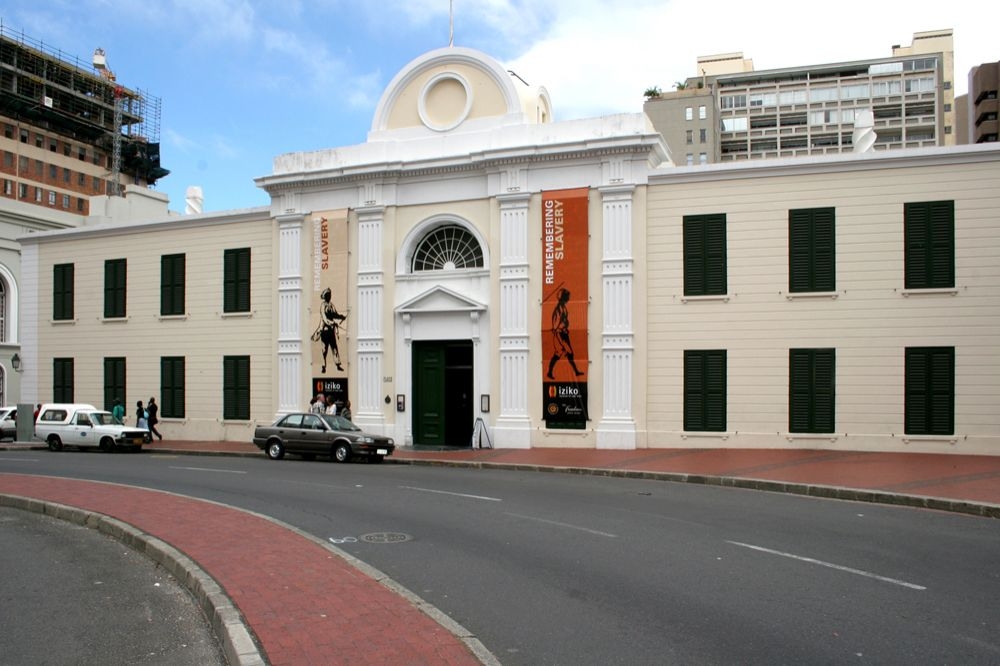 Slave Lodge museum in Adderley Street. Image source
Slave Lodge museum in Adderley Street. Image source
When Jan van Riebeeck arrived at the Cape, he was forbidden by the Dutch to enslave any of the local people. So, for the first five years at the Cape, the only slaves were stowaways.
As more Dutch settlers arrived at the Cape, they needed more workers to plant gardens, build houses and run the refreshment station. At first, the local Khoikhoi were prepared to work from time to time, helping in the gardens and doing other manual (physical) work. However, they did not want to leave their cattle and so were not always available. Later, they did not trust the Dutch and did not want to work for them at all. The DEIC already used slaves in other settlements so the Dutch decided to bring them to the Cape as well.
In the early years of slavery, only the DEIC owned slaves. They were housed in the Slave Lodge in Adderley Street. This is the second-oldest building in Cape Town and is now a museum. Later, free citizens of the town and farmers in the countryside were also granted the right to own slaves. In 1658 there were only 11 slaves at the Cape.
Jan Van Riebeeck wrote the following in his diary:
 Jan Van Riebeeck Image source
Jan Van Riebeeck Image source
"I don't want to use our soldiers and sailors for agricultural work and seal-catching. It's too expensive. The locals don’t want to work for us. It would be much better for slaves to be brought here."
Where the slaves came from
The first slaves to arrive at the Cape came from Angola. Later, slaves came mainly from countries along the Indian Ocean trade route because the Dutch East India Company was, by then, allowed to trade only along the East Coast of Africa and with countries in the East. These countries included India, the East Indies, Mozambique, Madagascar, Japan, Guinea and Angola. Many slaves were talented and skilful people in their home countries and were forced to move away from families and friends. The slaves had to learn Dutch. Afrikaans first developed as a slave language that emerged from the mixture of Dutch, English, and other European and Malay languages.
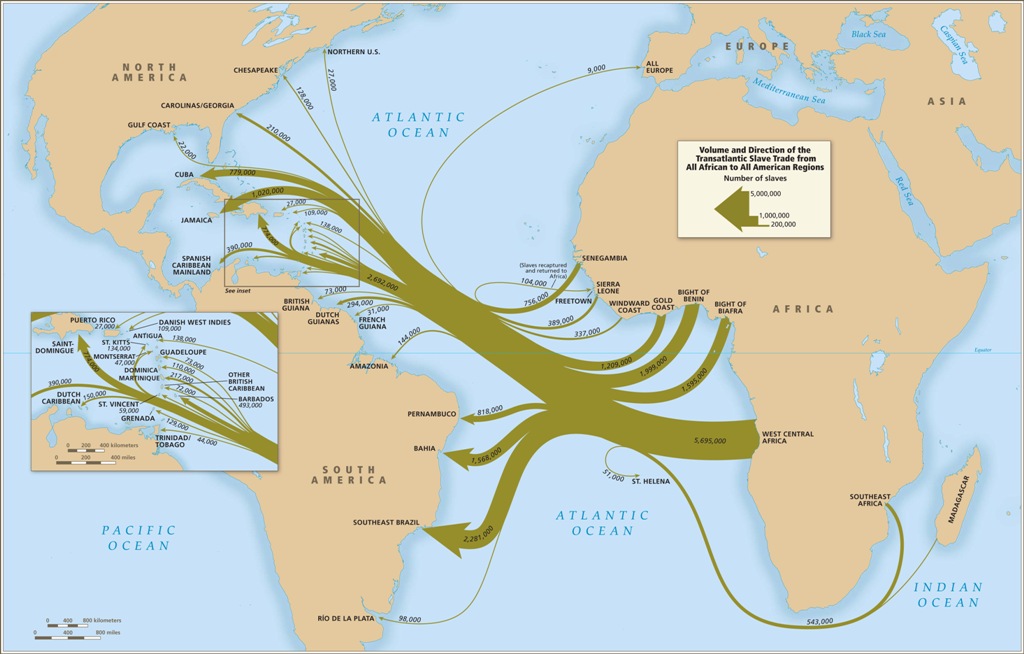 A map showing where slaves came from. Image source
A map showing where slaves came from. Image source
Activity 4
Name 6 places from which slaves were captured and brought to the Cape. (6)
Give your opinion as to why slaves were not brought overland from Mozambique to the Cape. (1)
Total: 5
People became slaves in different ways:
- Some were sold into slavery by their families, if the family was poor and could not afford to survive.
- Some could not afford to pay a debt, so they were enslaved as a payment of the debt.
- Some were born to parents who were slaves, and so would become slaves themselves.
- Most people who became slaves were captured in war and then sold to slave traders. People could make a lot of money from this, so some groups of people started wars just so that they could take slaves.
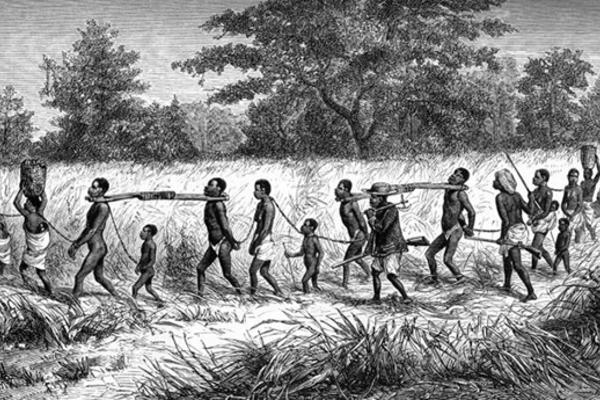 Slaves were tied to each other so that they could not escape while being transported. Image source
Slaves were tied to each other so that they could not escape while being transported. Image source
How slaves were brought to the Cape
The slaves were taken from their homes, to the Cape, on ships.
- Sometimes the VOC sent a ship to the east just to get a load of slaves.
- Some Dutch VOC officials working in the east bought slaves. Slavery was illegal in Holland; so on their way home to Holland they sold their slaves at the Cape. They got a better price for the slaves in the Cape than in the east, so they made a good profit doing this.
- Some slave ships stopped at the Cape on their way to Europe or the Americas from Madagascar. They stopped at the Cape to get fresh water and food. They would sell some of their slaves while they were there.
- Some slaves were carried by ships that were carrying other goods for trade. Traders bought the goods and the slaves in the east and took them all to Europe or the Americas to trade.
| Vocabulary | Definition |
|---|---|
| Viticulture | making wine |
| Chaff | the cover of seeds, usually regarded as useless |
| Winnowing | the process of separating grain from chaff by throwing it into the air or blowing air through it |
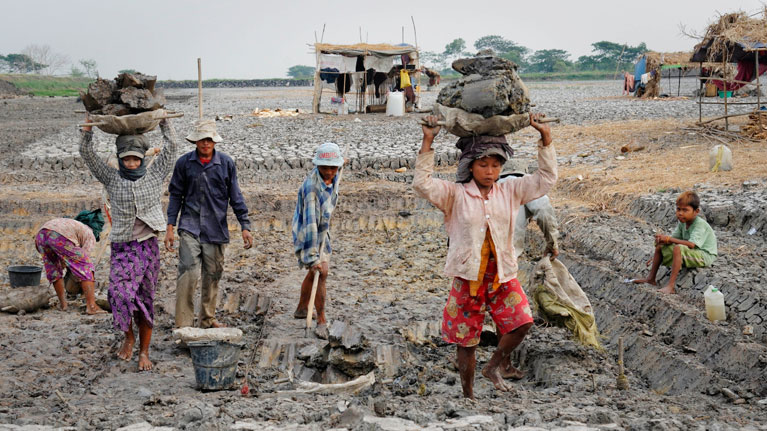 Some of the work activities that slaves did in the home. Image source
Some of the work activities that slaves did in the home. Image source
Wheat farming, viticulture and breeding animals were the main activities in the Cape. Many farms produced both wheat and grapes. The largest farms, which produced grain or wine, rarely employed more than 50 slaves.
Slave work on the farms included:
- working in the gardens
- watering the plants
- weeding
- looking after livestock
- ploughing and harvesting wheat, using hand tools such as sickles
- sieving the grain to remove the chaff, gathering the wheat into piles (slave children often did this)
- winnowing
Only the larger farms had special slave lodges. Otherwise, slaves slept in kitchens or outside when it was warm. It was common for farmers to send their slaves to work on other farms where slaves then worked as hired labour. The farmers earned extra money in this way.
Other slave activities
Some slave owners rented out their slaves to do unskilled work such as working in the docks. In the city, slaves did almost all skilled work. Some learnt new skills or used those they had learnt in their own countries and worked as cart drivers, bricklayers, builders, painters, carpenters, shoemakers, tailors and boat builders.
Sometimes slaves sold and bartered goods for their masters in the town. Many others were fishermen. They had to pay any wages they earned to their owners. Some kinder and fairer owners allowed their slaves to keep some of the money earned.
Cape slave owners controlled their slaves very strictly. Slave owners could use harsh punishments like whipping, starving and forcing slaves to work very long hours. If slaves ever tried to run away, they would be caught and put in chains to stop them from doing it again. As well as being cruelly punished, slaves were forced to live by some very strict rules. Here are some of them:
All slaves had to be indoors by 10 pm and if they were not, they had to carry a light if they were on the streets.
They were not allowed to ride on wagons and horses in the street. Slaves were not allowed to gather outside the entrances of church buildings during services.
They were also not allowed to stop and talk to other slaves when out on the streets.
It was very difficult for slaves in the Cape to lead normal family lives. Just as in the American South, slaves were not allowed to marry. Slave traders often separated partners.
Slaves were bought and sold at DElC slave auctions (sales) and private auctions. They were also bought, sold and hired out through advertisements placed in newspapers in the same way as in the American South. Any children born to slaves were owned by the slave owners. They faced lives as miserable as their parents', with very little hope of escape.
Sometimes, the slaves resisted or fought back against their harsh owners as they did in the American South, but it was difficult to get together in groups in order to do this. Two organised but small uprisings of slaves took place in the early 1800s, when the Cape was under British rule.
Slavery was abolished in 1834. Some slaves heard that this was going to happen, and rebelled because they believed that they would be given their freedom earlier.
| Case study 1: The 1808 rebellion |
|---|
| In 1808, a slave called Lois led a rebellion. He was very light- skinned, and many people thought he was white. He led a group of slaves and Khoikhoi people to Cape Town, where they planned to take over the store of weapons. Then they planned to talk to the authorities about peace and freedom for all slaves. They marched to Cape Town, gathering over 300 slaves and Khoikhoi servants along the way. When they got close to Cape Town, they were met by a group of soldiers. The soldiers were armed and they defeated the slave group. They captured 327 of the rebels and put 47 of them on trial. Altogether, 20 rebels were sentenced to death. Others were put into prison for taking part in the rebellion. |
| Case study 2: The story of Galant’s rebellion |
|---|
| Galant was a slave owned by a cruel farmer named Van der Merwe who beat his slaves and treated them very badly. In 1825, 25-year-old Galant and the other slaves heard that the colony might abolish slavery. They thought that they might be freed. But, Galant overheard Van der Merwe saying that he would never give his slaves their freedom. Galant realised that he might be a slave for the rest of his life. He organised the slaves on nearby farms to rebel against their masters. Galant and the other slaves killed Van der Merwe and two other white people. Then they fled into the mountains nearby. A group of soldiers came from Cape Town and caught Galant and the other slaves. They went on trial for murder. At the trial, Galant and the other slaves told the court how Van der Merwe had treated them. He told them that he had complained to the authorities about the cruelty three times but nothing had been done. The court found Galant guilty of murder and he and two other slaves were executed. |
Slave legacy at the Cape
Slaves were in the Cape for 180 years. Many slaves came from the East. In this time, slaves and their descendants made an enormous cultural contribution to Cape Town and the area around it. Many slaves were skilled builders, cabinet-makers, plasterers, dressmakers, bricklayers and carpenters. Evidence of these skills can still be seen in the Cape Dutch buildings and architecture built at that time.
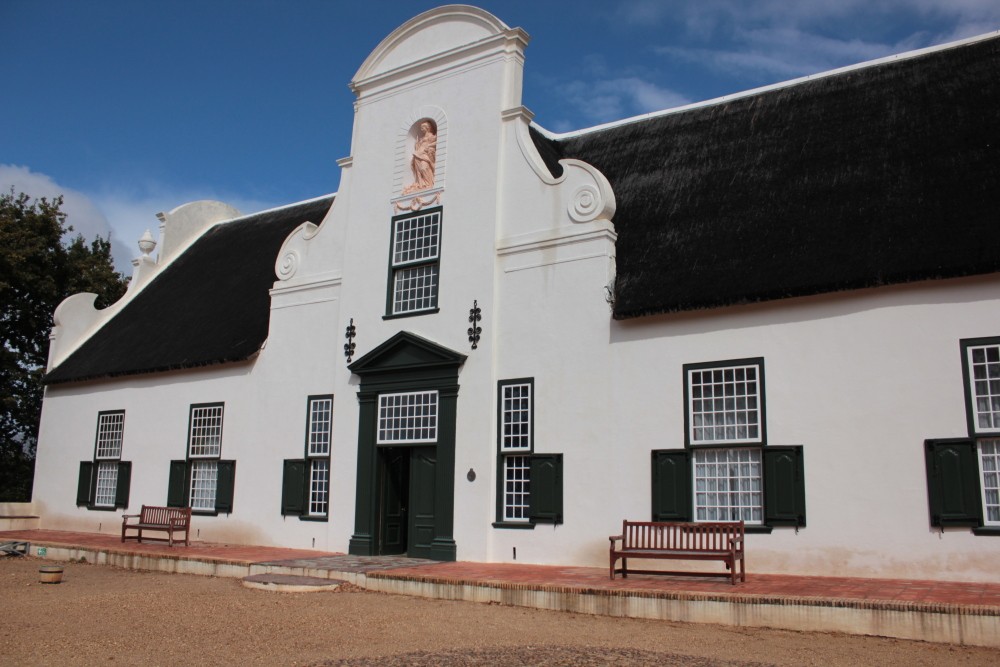 Cape Dutch architecture. Image source
Cape Dutch architecture. Image source
The slaves brought, to Cape Town, their own music, language and design (clothes and art), which was rich in colour and different to the 'Cape Dutch' style. Cape Malay music originated from these slaves and the Cape Malay musical tradition is continued by the Cape Minstrel Carnival held on 2 January (Tweede Nuwe Jaar) every year. The style and flavour of 'Cape Malay' dishes is very distinctive.
Traditional Cape Malay foods and recipes such as bobotie, bredies and samoosas have become part of South African culture and tradition.
Religion of Islam
Those slaves who came from the East brought the religion of Islam to the Cape. The European settlers were Christian while the Khoikhoi and Xhosa people originally followed traditional African religions.
In time, as a result of the work of missionaries, most indigenous people became Christians. Islam arrived with slaves from Islamic countries and spread throughout South Africa. For the slaves, their religion, Islam, was a way of life. They practised their religion, which was a great part of their identity.
Today, Islam remains a vibrant, flourishing religion that has had a significant social, cultural and political influence in South Africa. The largest group of South African Muslims (followers of Islam) is still found in the Western Cape. This can be seen by the number of mosques that have been built in the region.
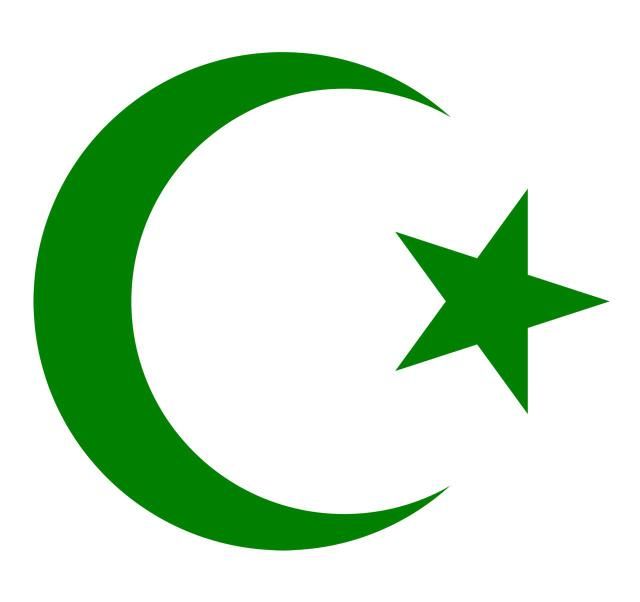 Symbol for Islam. Image source
Symbol for Islam. Image source
Development of the Afrikaans language
The slaves came from many different places and did not have one common language. They all learnt Dutch in order to communicate with each other and with the slave owners. The slaves added words from their own languages. In time, this language became Afrikaans. Many words in Afrikaans were influenced by the languages the slaves spoke. For example: baie- a lot; piesang- banana; blatjang- chutney; sjambok- whip
Free burghers: The Dutch and French Huguenot immigration to the Cape
The Dutch and Free Burghers
The DElC offered work at the Cape to both Dutch and French citizens. Those who completed their three-year contract could apply to become free from the DElC. Such people were known as Free Burghers. They could own land and slaves, and these people played an important role in the development of the Cape.
The French Huguenots
In 1685, the DEIC wanted to develop farming more, and so decided to send a number of new people to the Cape. It hoped that the French would be part of this group. But, only three French people came to the Cape that year. They were Huguenots, who were French Protestants who had been persecuted (treated cruelly and unfairly) by the Catholic government of France.
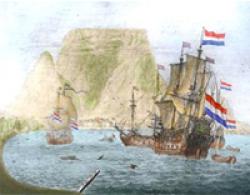 French Huguenots arriving at the Cape. Image source
French Huguenots arriving at the Cape. Image source
The Dutch were also Protestant, and they offered the Huguenots a new home where they could be safe. Between 1688 and 1689, about 175 Huguenots settled at the Cape. By 1729, there were 279 French Huguenots and their descendants at the Cape.